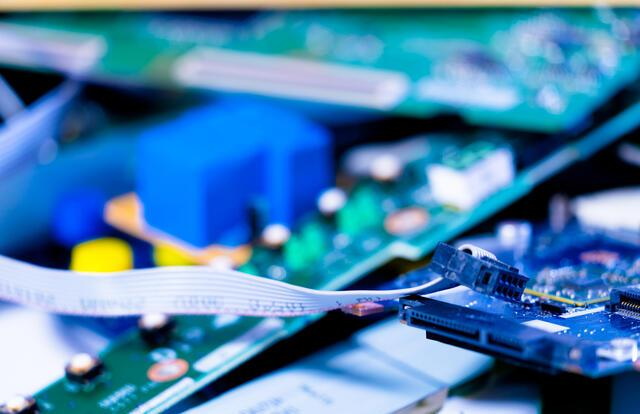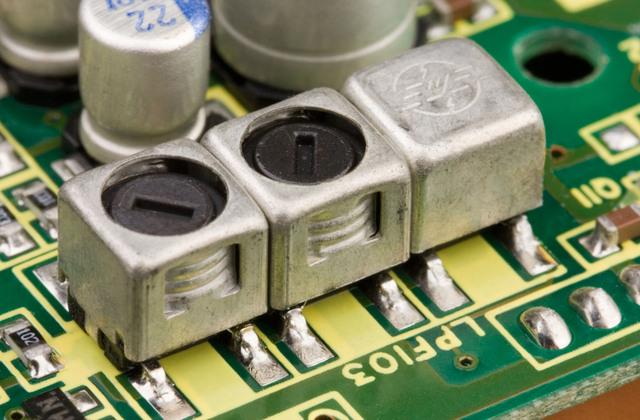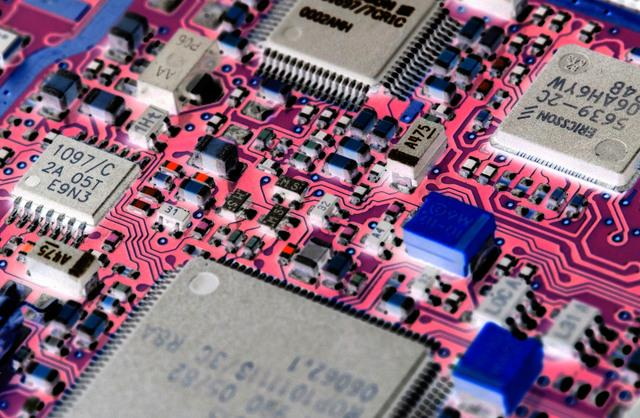Content Menu
● Understanding SMT: An Overview
● Key Stages in the SMT Process Flow
>> 1. Material Preparation and Inspection
>> 2. Solder Paste Printing
>> 3. Component Placement
>> 4. Reflow Soldering
>> 5. Inspection and Testing
>> 6. Cleaning and Final Inspection
● Benefits of SMT
● Challenges in SMT
● Emerging Trends in SMT
● Conclusion
● FAQ
>> 1. What types of components are used in SMT?
>> 2. How does reflow soldering work?
>> 3. What is AOI in SMT?
>> 4. Why is solder paste important?
>> 5. What are common issues faced during SMT assembly?
● Citations:
Surface Mount Technology (SMT) has revolutionized the electronics manufacturing industry by enabling efficient assembly of electronic components onto printed circuit boards (PCBs). This article delves into the SMT line process flow, detailing each step involved and how it contributes to the overall function of electronic devices.

Understanding SMT: An Overview
SMT is a method that allows components to be mounted directly onto the surface of PCBs. Unlike traditional Through-Hole Technology (THT), which requires drilling holes into the PCB for component leads, SMT utilizes solder pads to attach components, resulting in a more compact and efficient design. This process is particularly advantageous for high-volume production where speed and precision are paramount.
Key Stages in the SMT Process Flow
The SMT line process can be broken down into several key stages, each critical to ensuring high-quality assembly. The primary stages are:
- Material Preparation and Inspection
- Solder Paste Printing
- Component Placement
- Reflow Soldering
- Inspection and Testing
- Cleaning and Final Inspection
1. Material Preparation and Inspection
Before any assembly can begin, materials must be prepared and inspected. This includes:
- Selecting Components: The appropriate surface mount components (SMCs) are chosen based on the design specifications.
- Inspecting PCBs: Quality Control (QC) inspectors examine the bare PCBs for defects, ensuring that only quality materials proceed to the next stage.
This initial step is crucial as it sets the foundation for a successful assembly process. The quality of both components and PCBs can significantly affect the performance of the final product.
2. Solder Paste Printing
The next step involves applying solder paste to the PCB. This paste is a mixture of tiny metal particles and flux, which helps in creating strong solder joints when heated. The process involves:
- Using a Stencil: A stencil aligns with the PCB to ensure that solder paste is applied only to designated areas.
- Squeegee Application: A squeegee spreads the solder paste across the stencil, filling the pads where components will later be placed.
Proper application of solder paste is vital; insufficient or excessive paste can lead to poor connections or short circuits. Additionally, solder paste inspection (SPI) is often performed after this step to ensure that the paste has been applied correctly.
3. Component Placement
Once the solder paste is applied, it's time to place the components on the PCB. This step is typically automated using a pick-and-place machine, which performs several functions:
- Picking Components: The machine uses suction nozzles to pick up SMCs from feeders.
- Placing Components: It accurately positions these components onto the soldered pads on the PCB.
Automation in this stage significantly reduces human error and increases production speed. Advanced pick-and-place machines can also adapt to various component sizes and types, enhancing flexibility in production lines.

4. Reflow Soldering
After component placement, the PCB moves into a reflow oven for soldering. This stage involves several temperature zones:
- Preheat Zone: The temperature gradually rises to prepare both the PCB and components for soldering, typically reaching 140-160°C.
- Soak Zone: The temperature stabilizes at this range for about 60-90 seconds, allowing for even heating.
- Reflow Zone: The temperature increases to 210-230°C, melting the solder paste and creating electrical connections between components and pads.
- Cooling Zone: Finally, the PCB cools down to solidify the solder joints, preventing defects.
This controlled heating process is critical for ensuring reliable electrical connections without damaging sensitive components. Understanding thermal profiles during reflow is essential for optimizing soldering results.
5. Inspection and Testing
After reflow soldering, thorough inspection is conducted to ensure quality:
- Automated Optical Inspection (AOI): This technology scans the PCB for defects in component placement or solder joints.
- Functional Testing: Additional tests may be conducted to verify that assembled boards operate correctly under expected conditions.
This final inspection phase is essential for maintaining high standards of quality control in electronics manufacturing. Advanced testing methods may include X-ray inspection for hidden solder joints or functional testing under various conditions to ensure reliability.
6. Cleaning and Final Inspection
In many cases, PCBs undergo a cleaning process post-soldering to remove any residual flux or contaminants that could affect performance. This step may involve:
- Cleaning Agents: Specialized solutions are used to clean PCBs without damaging sensitive components.
- No-Clean Technology: In some cases, no-clean solder pastes are used which do not require cleaning after reflow.
Final inspection ensures that all cleaning processes have been effective and that no defects remain before products are packaged or shipped.
Benefits of SMT
The SMT process offers numerous advantages over traditional assembly methods:
- Compact Design: By eliminating through-holes, SMT allows for smaller and lighter designs.
- Increased Production Speed: Automation speeds up production times significantly compared to manual assembly.
- Higher Reliability: Properly executed SMT processes yield higher reliability due to fewer mechanical stresses on components.
Challenges in SMT
Despite its advantages, SMT also presents challenges:
- Complexity in Design: Designing PCBs for SMT can be more complex due to space constraints.
- Sensitivity of Components: Many surface mount components are sensitive to heat and require careful handling during assembly.
Emerging Trends in SMT
As technology evolves, several trends are shaping the future of SMT:
- Automation Advancements: Increased automation continues to enhance efficiency while reducing labor costs.
- AI Integration: Artificial intelligence is being integrated into manufacturing processes for better decision-making and real-time fault detection.
- Sustainability Initiatives: Manufacturers are adopting eco-friendly practices such as lead-free solders and recycling programs.
These trends indicate a shift towards smarter manufacturing solutions that prioritize efficiency and environmental responsibility.
Conclusion
The SMT line process flow is a sophisticated method that enhances efficiency and reliability in electronics manufacturing. By understanding each stage—from material preparation through inspection—manufacturers can optimize their processes for better quality products. As technology continues to advance, SMT will remain a cornerstone of modern electronics production, adapting to new challenges while embracing innovations that enhance productivity and sustainability.

FAQ
1. What types of components are used in SMT?
SMT utilizes various surface mount components such as resistors, capacitors, integrated circuits (ICs), and connectors designed specifically for surface mounting on PCBs.
2. How does reflow soldering work?
Reflow soldering involves heating a PCB with applied solder paste in a controlled oven environment where temperatures rise through multiple zones until the solder melts and creates strong connections between components and pads before cooling down.
3. What is AOI in SMT?
Automated Optical Inspection (AOI) is a technology used post-manufacturing to inspect PCBs for defects by capturing images and comparing them against reference designs to ensure quality control.
4. Why is solder paste important?
Solder paste serves as both an adhesive during component placement and as a conductive medium when heated during reflow soldering, ensuring reliable electrical connections on PCBs.
5. What are common issues faced during SMT assembly?
Common issues include misalignment of components, insufficient or excessive solder paste application, thermal damage to sensitive parts during reflow, and defects detected during inspection processes.
Citations:
[1] https://www.jt-int.com/a-beginners-guide-to-smt-process-flow/
[2] https://www.pcbasic.com/blog/smt_production_line.html
[3] https://www.hayawin.com/resources/what-is-smt-assembly-the-advantages-and-applications-of-smt-64f6e8bd90b55.html
[4] https://www.raypcb.com/surface-mount-technology/
[5] https://www.globenewswire.com/news-release/2024/10/14/2962707/28124/en/Surface-Mount-Technology-Equipment-SMT-Market-to-Surge-to-8-32-Billion-by-2028-Global-Long-term-Forecast-to-2033.html
[6] https://txjpcb.com/the-best-practices-for-smt-line-balancing-and-optimization/
[7] https://mermarinc.com/2022/12/24/smt-line/
[8] https://www.mycronic.com/product-areas/pcb-assembly/news-and-press-releases/news/ten-key-smt-trends-you-need-to-know/
[9] https://www.rhsmt.com/news/smt-industrys-future-trends-the-impact-of-ai-and-automation/
[10] https://www.adoptsmt.com/en/efficiency-enhancement-in-smt-manufacturing/




















